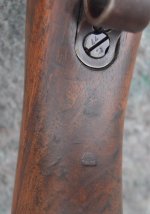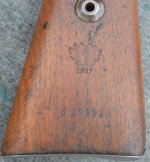I was a beginning Mauser collector back in the mid 1990's. I started out visiting gun shops, gun shows, and reading SGN. My first few purchases were a dot 1944, a byf 44, and a Hansen-imported Portuguese 1941. Somewhere in that time period, someone suggested joining the Karabiner Collector's Network to me. Between that and a copy of BOTW, my collecting universe opened up. I remember going to my mailbox daily hoping for my latest monthly edition of the KCN, soon to be every other month. I probably read every KCN cover to cover a dozen times. The July/August, 1998 newsletter had an article submitted by Bob Jensen titled, "Third Variation Portuguese Mauser." Being a proud owner of the last variation (937B), this article caught my attention. Here's an excerpt from that article in which Mr. Jensen describes the 937:
"...The third variation described...was unknown to me at the time. The author (Mr. Jensen referencing a previous article) apparently had not seen one but knew of their existence from written reference materials. The rifles were simply standard K98k rifles taken from regular production and sent to Portugal as prototypes to troop trial or as fillers to make up the total number of pieces required by the contract with the Portuguese.
Fortunately I recently purchased one of these rifles from an old collection of a long time collector friend. It is, in fact, simply an S/42 coded, 1937 dated rifle, serial numbered 1780 o. It is in fact about 80% overall condition but is all matching and complete. All proofs and markings are exactly what one would expect to find on an S/42, 1937 - except - on the left rear side of the stock the Portuguese crest, just as it appears on the receiver ring of both the M.37 (937A) and M.41 (937B) rifles, is stamped into the stock...In addition the Portuguese property number and the date 1937 is also stamped..."
This article stuck with me. I accumulated other Portuguese contract Kar.98k's over the years, but rarely saw this variation mentioned and am not sure I ever saw one for sale in the US, at least not until about a month ago. I took a chance on some mediocre photos of a rifle not described as Portuguese contract. I knew going into the purchase that it had some rust at the woodline and was being described as matching, but had to take the seller's word while I interrogated a salesman over the telephone as he held the rifle (hat tip to Floyd). It showed up a few days ago and I was pleasantly surprised. Other than the cleaning rod (which is likely from a similar Portuguese contract rifle), it is in fact matching. The stock appears unsanded and the Portuguese crest and rack number are sharp. I have seen this type of rifle discussed briefly on this forum over the years but believe that all of those rifles were still in Europe where they are undoubtedly much more common than in the US. My example was imported, and although the marking is externally visible, it is not obnoxious. Regardless, I looked for one of these for 20 plus years and am not upset about that. I think the chances of me finding one not import-marked were not great. Whereas many of the later Portuguese 937A's and 937B's ended up being exported to the US, Canada, and Australia, for whatever reason, it is my belief that the majority of the earliest diverted 937's went back to Germany.
"...The third variation described...was unknown to me at the time. The author (Mr. Jensen referencing a previous article) apparently had not seen one but knew of their existence from written reference materials. The rifles were simply standard K98k rifles taken from regular production and sent to Portugal as prototypes to troop trial or as fillers to make up the total number of pieces required by the contract with the Portuguese.
Fortunately I recently purchased one of these rifles from an old collection of a long time collector friend. It is, in fact, simply an S/42 coded, 1937 dated rifle, serial numbered 1780 o. It is in fact about 80% overall condition but is all matching and complete. All proofs and markings are exactly what one would expect to find on an S/42, 1937 - except - on the left rear side of the stock the Portuguese crest, just as it appears on the receiver ring of both the M.37 (937A) and M.41 (937B) rifles, is stamped into the stock...In addition the Portuguese property number and the date 1937 is also stamped..."
This article stuck with me. I accumulated other Portuguese contract Kar.98k's over the years, but rarely saw this variation mentioned and am not sure I ever saw one for sale in the US, at least not until about a month ago. I took a chance on some mediocre photos of a rifle not described as Portuguese contract. I knew going into the purchase that it had some rust at the woodline and was being described as matching, but had to take the seller's word while I interrogated a salesman over the telephone as he held the rifle (hat tip to Floyd). It showed up a few days ago and I was pleasantly surprised. Other than the cleaning rod (which is likely from a similar Portuguese contract rifle), it is in fact matching. The stock appears unsanded and the Portuguese crest and rack number are sharp. I have seen this type of rifle discussed briefly on this forum over the years but believe that all of those rifles were still in Europe where they are undoubtedly much more common than in the US. My example was imported, and although the marking is externally visible, it is not obnoxious. Regardless, I looked for one of these for 20 plus years and am not upset about that. I think the chances of me finding one not import-marked were not great. Whereas many of the later Portuguese 937A's and 937B's ended up being exported to the US, Canada, and Australia, for whatever reason, it is my belief that the majority of the earliest diverted 937's went back to Germany.
Attachments
-
 DSC_0184 (2).jpg342.3 KB · Views: 84
DSC_0184 (2).jpg342.3 KB · Views: 84 -
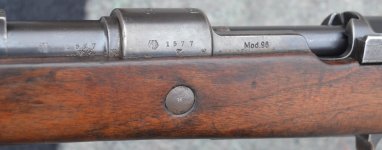 DSC_0185 (2).jpg299.7 KB · Views: 69
DSC_0185 (2).jpg299.7 KB · Views: 69 -
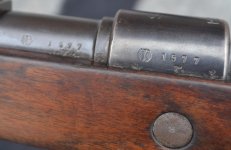 DSC_0186 (2).jpg281.7 KB · Views: 81
DSC_0186 (2).jpg281.7 KB · Views: 81 -
 DSC_0187 (2).jpg277.6 KB · Views: 55
DSC_0187 (2).jpg277.6 KB · Views: 55 -
 DSC_0188 (2).jpg266.9 KB · Views: 55
DSC_0188 (2).jpg266.9 KB · Views: 55 -
 DSC_0189 (2).jpg262.8 KB · Views: 79
DSC_0189 (2).jpg262.8 KB · Views: 79 -
 DSC_0190 (2).jpg175 KB · Views: 46
DSC_0190 (2).jpg175 KB · Views: 46 -
 DSC_0191 (2).JPG233 KB · Views: 43
DSC_0191 (2).JPG233 KB · Views: 43 -
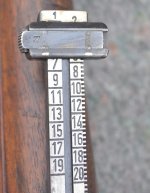 DSC_0192 (2).jpg188.3 KB · Views: 43
DSC_0192 (2).jpg188.3 KB · Views: 43 -
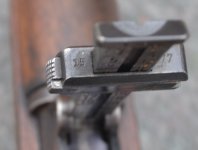 DSC_0193 (2).JPG195.9 KB · Views: 41
DSC_0193 (2).JPG195.9 KB · Views: 41 -
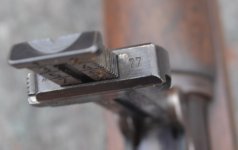 DSC_0194 (2).JPG193 KB · Views: 38
DSC_0194 (2).JPG193 KB · Views: 38 -
 DSC_0195 (2).jpg293.6 KB · Views: 41
DSC_0195 (2).jpg293.6 KB · Views: 41 -
 DSC_0196 (2).jpg278.6 KB · Views: 36
DSC_0196 (2).jpg278.6 KB · Views: 36 -
 DSC_0197 (2).jpg240.2 KB · Views: 35
DSC_0197 (2).jpg240.2 KB · Views: 35 -
 DSC_0198 (2).jpg288.5 KB · Views: 32
DSC_0198 (2).jpg288.5 KB · Views: 32 -
 DSC_0199 (2).JPG277.6 KB · Views: 34
DSC_0199 (2).JPG277.6 KB · Views: 34 -
 DSC_0200 (2).JPG292.6 KB · Views: 35
DSC_0200 (2).JPG292.6 KB · Views: 35 -
 DSC_0201 (2).jpg131.3 KB · Views: 37
DSC_0201 (2).jpg131.3 KB · Views: 37 -
 DSC_0202 (2).jpg173.3 KB · Views: 38
DSC_0202 (2).jpg173.3 KB · Views: 38 -
 DSC_0203 (2).jpg217.8 KB · Views: 46
DSC_0203 (2).jpg217.8 KB · Views: 46





